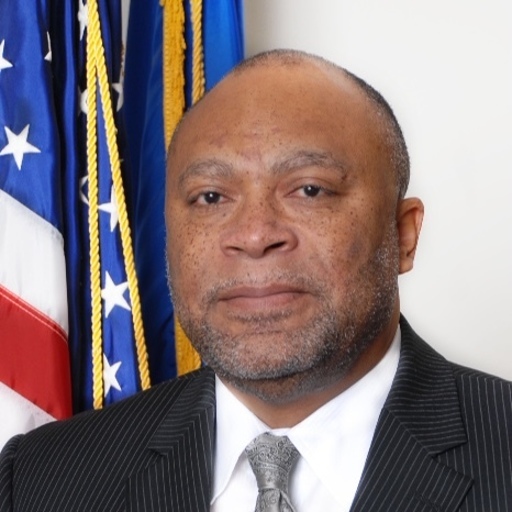Globally and locally, technology continues to change the way we live and govern. When people interact with their government, they expect service similar to what they get with a business. One of the biggest public sector trends in 2023 will be how government agencies transform their digital services to meet these expectations.
Public sector organizations have made strides in recent years to modernize service to remain on par with their private sector counterparts, but there is always more to be done. We asked four Salesforce executives for the public sector trends they’re watching closely as we start the new year — and innovation is the central thread.
From new sustainable practices and productivity-boosting collaboration tools, to constituent-centered design and advanced security initiatives, read on to hear what trends are driving mission success for the public sector in the year to come.
Make a plan to modernize in 2023
Improving your technology can help you build trust with the people you serve, transforming the constituent experience while cutting costs.


Sustainability will be a key focus for all levels of government

Nasi Jazayeri is the executive vice president and general manager of public sector and industries cloud at Salesforce.
The race to reduce global carbon emissions over the next three decades is, arguably, the most pressing issue facing humanity. The response from world leaders demonstrates the need for significant action to reverse the course of the climate crisis. But, for that to happen, the coming years will require collaborative action that begins with leadership from public sector organizations.
Climate-related regulation is the most direct path for government action and ensures that both public and private sector organizations have a standard way to measure carbon reduction efforts.
Forerunners like the U.S. EPA & U.S. Department of Energy’s Energy Star program is an example of how public policy could impact private practices over time. And, more recently, as directed in an executive order from January 2021, the EPA is considering proposals to address some of our nation’s largest sources of both climate- and health-harming pollution, such as the transportation, oil and natural gas, and power sectors.
And while similar policy changes pick up momentum around the world, the leaders of practical net zero initiatives appear to be local governments. Local municipalities are now turning to newer, more advanced technologies to help them implement sustainable practices.
From using Internet of Things (IoT) networks to monitor air quality & manage traffic, to using artificial intelligence (AI) to improve public safety, boosting technology is among the major public sector trends going into 2023. Modern smart cities are employing technology to build safe, healthy, and equitable communities.
The global shift we need to see in sustainability practices will begin with hyperlocal investments that leverage public-private partnerships to accelerate our path to net zero.
Nasi Jazayeri
EVP and GM of Public Sector and Industries Cloud
The good news is that government organizations of all sizes can now look to technology to help them accelerate their path to net zero. Cloud solutions are allowing agencies, businesses, and ecopreneurs to use the power of connected platforms, live data, and predictive analytics to more effectively measure their carbon emissions. They’re also using this technology to take preventative measures to reduce projected future environmental impact.
These solutions have proven to be powerful tools for organizations that are working to reduce costs and emissions at the same time. Public sector organizations can use technology to unify data from multiple sources to help automate emissions tracking and gain powerful insights that can be easily modeled for regulatory reports.
With this technology in hand, the reality of decarbonizing government and creating more sustainable operations could be more attainable than we realize.
Reduce costs and emissions all at once
There are ways to take the guesswork out of your sustainability efforts. Improving your technology can help you easily track, analyze, and report on environmental data.



Collaboration and a simpler user experience are digital must-haves in 2023

Rod Bremby is the regional vice president of sales at Salesforce.
With the increasing frequency and severity of emergency situations around the world, response measures are continually being tested. The public sector’s ability to develop more collaborative response strategies will make a difference in ensuring public health and safety. As a result, more government organizations are now prioritizing emergency response readiness and using digital-first solutions to build more resilient systems.
Emergency situations are highly dynamic and often require live data and coordination between multiple agencies and private sector organizations. Effective communication can make the difference between a successful response plan and the misallocation of resources or response delays that could make a critical situation worse.
Digital tools are helping agencies collect and analyze data in real time to make informed decisions. Using digital collaboration platforms keeps lines of communication open before, during, and after an event. This way, all necessary parties see the right information at the right time.
However, emergency response situations are just an example of how collaborative technology can help the public sector in a variety of scenarios. Just as there is a need for a “one government” experience in emergency response, the public sector should seek to create seamless, interconnected experiences that span multiple agency touchpoints. From relief assistance and grants management to immigration, and child and family services, the possibilities are vast.
This is already a priority for the U.S. federal government, and one of the public sector trends that local government organizations should work toward, as well.
“Human-centered design research will drive the management of Federal programs to develop a comprehensive understanding of how individuals interact with Federal services,” the President’s Management Agenda Vision states. “Through this process, agencies will identify barriers to service delivery and how those barriers create undue burdens on those the Government serves, in particular for underserved communities.”
Often, people find themselves navigating an inefficient path of communication channels — email addresses, phone numbers, websites, and local offices — to get the services they need. But people now expect government services to be accessible, and government organizations to be smart, responsive, and agile.
Government organizations have an opportunity to use modern digital tools to build intuitive, connected systems that unite their departments, teams, and their workflows around the most important part of the mission – the people.
Government in action
See how Team America Relief coordinates a global crisis response with its digital HQ.



AI and automation will be key to the public sector workforce of the future

Nadia Hansen is the global industry and digital transformation executive at Salesforce leading go-to-market strategy for state and local governments.
According to Salesforce’s recent Connected Government Report, people are increasingly taking a digital-first approach to engaging with their local and national governments. Particularly younger people, with 25% of Gen Z respondents saying that social channels are their primary sources of information related to public services.
To keep up with this shift, public sector agencies are working to find technology that helps them better connect with people, work more efficiently, and cut costs. As a result, AI and automation solutions have taken a more prominent role to increase workforce efficiency and give public sector employees the tools they need to deliver personalized service on any channel.
Using technologies like chatbots and predictive analytics to assist with self-service issues, algorithms to look for opportunities to optimize processes, or automating application processing to speed up case resolution times are all examples of how AI and machine learning has helped modernize public sector services.
Government agencies haven’t yet realized the full potential of AI and machine learning, but they can be powerful tools to boost worker productivity and potentially open avenues for new types of jobs. To make the most of this, the public sector workforce needs to be well-versed in the capabilities and risks of this technology.
Recent developments, like the proposal of a federal workforce AI training bill, show the need to close digital skills gaps in today’s workforce and serve as an indicator that AI may soon play a much bigger role in government operations.
In order to continue this progress, public sector organizations must embrace opportunities to cultivate a digital-ready workforce. These employees need access to agile digital tools that will help them become more efficient and support mission success.
Together, with stronger digital skills developments and offerings, public sector organizations can help increase equal opportunities for their employees and close the digital skills gap.
Public sector organizations need to build trust for digital efforts to succeed
Anand Datla is the vice president of program management for the Department of Defense at Salesforce.
Establishing and maintaining trust on digital platforms is critical to building positive relations with constituents. Ongoing efforts to establish digital trust and increase engagement sets the stage for governments to serve their people with personalized, proactive solutions.
Security and trust go hand in hand. When we asked people about the most important improvements their governments can make when it comes to service delivery, they cited transparency & security as leading factors. To continue to build trust, government organizations must pair robust security measures with an optimized approach to digital engagement.
Recent research reveals that most ransomware attacks worldwide targeted industries that play a “critical role” in domestic and international supply chains — including IT, health care, and the public sector. Additionally, we found that IT leaders across the board expect government to continue to be one of the top 5 most targeted industries for cyberattacks.
The nature and frequency of these attacks can leave wide swaths of populations vulnerable. In response, many governments are taking proactive steps to secure mission-critical infrastructure against cyberthreats.
However, achieving this requires a security strategy that extends beyond the scope of present government operations. In the U.S. alone, approximately 85 percent of national critical infrastructure is under private sector control. This highlights the need to work together with the private sector to improve government security.
We are now seeing action at the national level serving as a catalyst for the public sector to collaborate with private sector and academic communities to enhance software supply chain security. Today, similarly aligned efforts are defining the future of government cybersecurity. Even more interesting are the examples we see of government agencies leading in delivering on this type of innovation.
Many government organizations, particularly defense organizations, are already leading the way in cybersecurity through these partnerships. They’ve started adopting container technology and explored self-healing technology that enables automated vulnerability patching without human intervention.
Many agencies are also using AI to proactively prevent and block potential threats, as well as technology that addresses security gaps with real-time response measures.
Not to be overlooked is the potential impact government & industry collaboration will have not only on institutions but on the people who benefit from government services. As personal data continues to expand and grow in complexity, private sector companies are using this data to tailor intelligent, personalized services and product offerings. Moreover, businesses are turning to government security standards, such as NIST CSF, to benchmark for best practices.
Likewise, as government continues to transition to more data-driven platforms, there will be an increasing need to securely use deep data to deliver valuable, timely services to constituents and businesses.
Data is now the world’s most valuable commodity. The key to unlocking the power of that data hinges on the public sector’s ability to demonstrate a continued commitment to security on all fronts, as well as a willingness to build transparency into their digital services.
Improve security & build trust
Learn more about how the technology that the public sector uses every day can help bridge the trust gap between government and its people.













